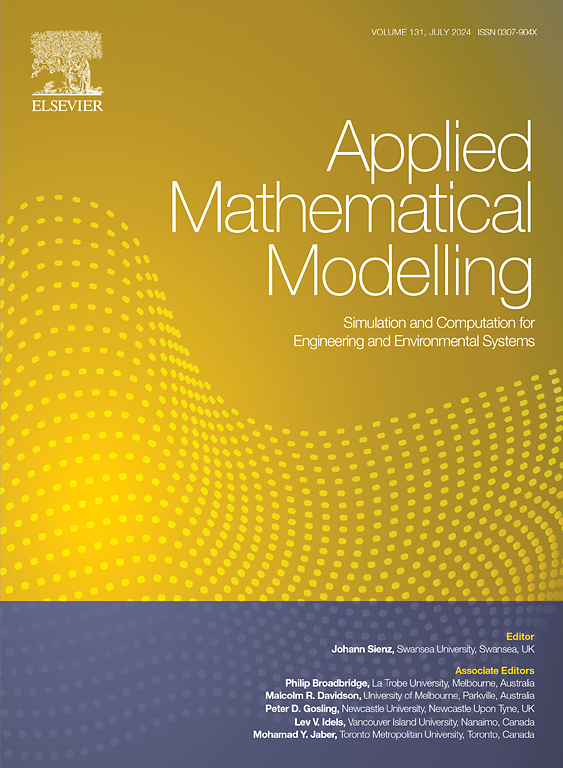Gradient damage models for studying material behavior in underground mining
IF 4.4
2区 工程技术
Q1 ENGINEERING, MULTIDISCIPLINARY
引用次数: 0
Abstract
Block caving is a technique employed in underground mining for the extraction of minerals. It utilizes the force of gravity to facilitate the controlled fracturing of rock, thereby enabling the efficient retrieval of ores from the mine. In our pursuit of numerical simulation of this extraction process and a more profound comprehension of its influence on the mine environment, we examine variational damage models founded upon the gradient damage model proposed by Pham and Marigo in 2010. However, the original theory of Pham and Marigo is insufficient for accurately modeling the complexities of large-scale problems where compression-induced damage is pervasive throughout the rock mass and impedes the recovery of subsidence in the cavity ceiling. To address this limitation, we introduce a variation of the model. This variation incorporates an anisotropic dependence of the damage criterion on the spherical and deviatoric components of the stress tensor, effectively controlling compression damage. The simulations demonstrate the effectiveness of the proposed extension in accurately representing the observed damage in the rock mass and the expected subsidence in a block-caving operation. The new model provides a more comprehensive and realistic representation of the underground mining process, contributing to improved predictive capabilities and more informed mining decision-making.
研究地下开采材料特性的梯度损伤模型
块状崩落法是地下开采中用于提取矿物的一种技术。它利用重力来促进岩石的受控破裂,从而能够有效地从矿山中回收矿石。为了对这一提取过程进行数值模拟,并更深入地了解其对矿山环境的影响,我们研究了基于Pham和Marigo(2010)提出的梯度损伤模型的变分损伤模型。然而,Pham和Marigo的原始理论不足以准确地模拟大规模问题的复杂性,在这些问题中,压缩损伤在整个岩体中普遍存在,并阻碍了洞顶沉陷的恢复。为了解决这个限制,我们引入了模型的一个变体。这种变化结合了损伤准则对应力张量的球面分量和偏分量的各向异性依赖,有效地控制了压缩损伤。仿真结果表明,所提出的扩展方法能够准确地表示块体崩落过程中岩体的观测损伤和预期沉降。新模型提供了一个更全面、更真实的地下开采过程,有助于提高预测能力和更明智的采矿决策。
本文章由计算机程序翻译,如有差异,请以英文原文为准。
求助全文
约1分钟内获得全文
求助全文
来源期刊

Applied Mathematical Modelling
数学-工程:综合
CiteScore
9.80
自引率
8.00%
发文量
508
审稿时长
43 days
期刊介绍:
Applied Mathematical Modelling focuses on research related to the mathematical modelling of engineering and environmental processes, manufacturing, and industrial systems. A significant emerging area of research activity involves multiphysics processes, and contributions in this area are particularly encouraged.
This influential publication covers a wide spectrum of subjects including heat transfer, fluid mechanics, CFD, and transport phenomena; solid mechanics and mechanics of metals; electromagnets and MHD; reliability modelling and system optimization; finite volume, finite element, and boundary element procedures; modelling of inventory, industrial, manufacturing and logistics systems for viable decision making; civil engineering systems and structures; mineral and energy resources; relevant software engineering issues associated with CAD and CAE; and materials and metallurgical engineering.
Applied Mathematical Modelling is primarily interested in papers developing increased insights into real-world problems through novel mathematical modelling, novel applications or a combination of these. Papers employing existing numerical techniques must demonstrate sufficient novelty in the solution of practical problems. Papers on fuzzy logic in decision-making or purely financial mathematics are normally not considered. Research on fractional differential equations, bifurcation, and numerical methods needs to include practical examples. Population dynamics must solve realistic scenarios. Papers in the area of logistics and business modelling should demonstrate meaningful managerial insight. Submissions with no real-world application will not be considered.
 求助内容:
求助内容: 应助结果提醒方式:
应助结果提醒方式:


